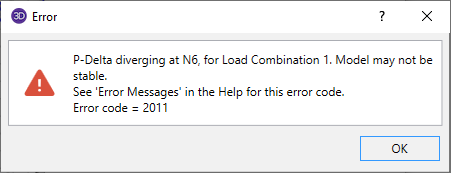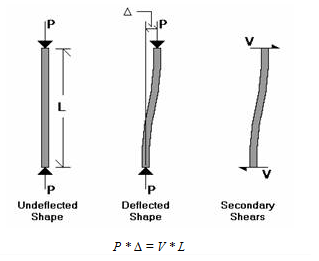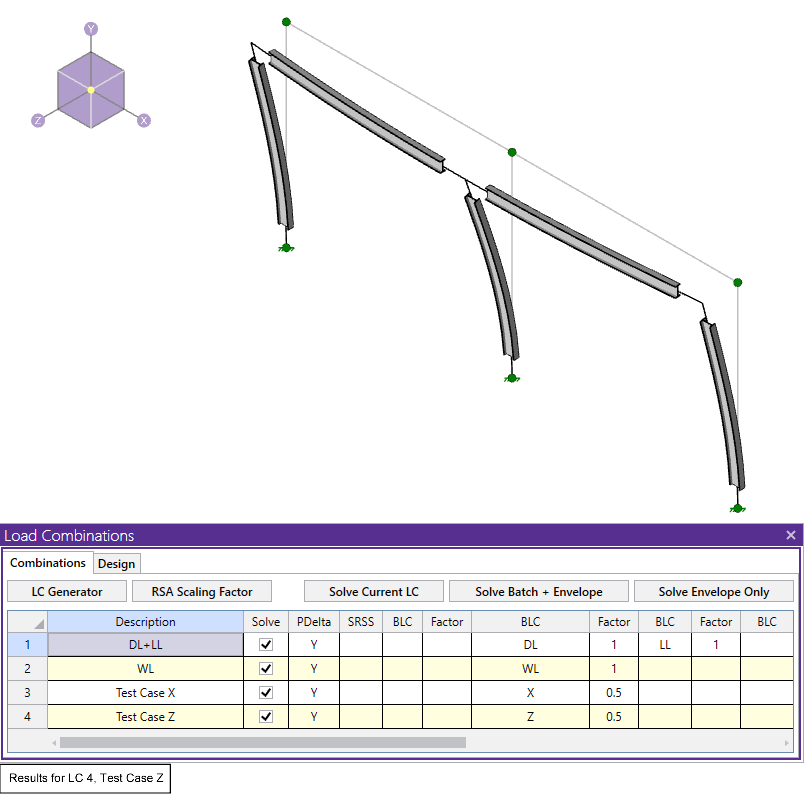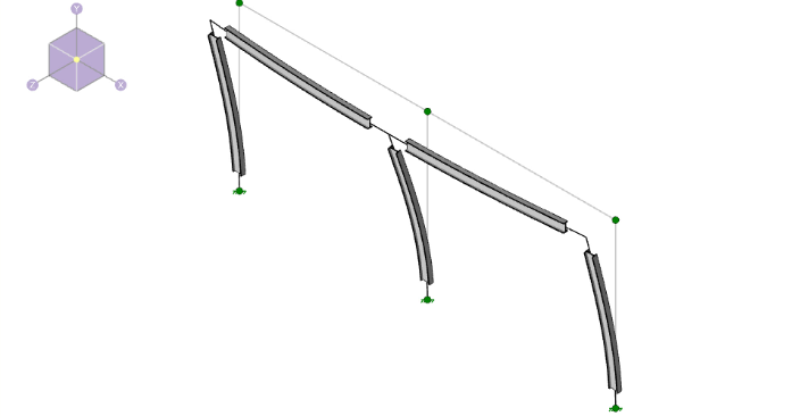Products
Learn
Support
Company
“Why am I receiving a P-Delta instability error when I run my DL + LL load combination? I don’t see this error when I run my lateral load only combination.”
This is a very popular question that we receive in technical support and it is quite understandable. Why would the model solve with a lateral load but give an P-Delta error with just gravity loads? To understand this, we need to first get a better grasp at how RISA-3D is applying the P-Delta analysis.

RISA-3D is calculating secondary shears based on gravity loading and member deflections. This lateral load (secondary shear) is then applied to every member in both directions. For a more comprehensive explanation of how this calculation is performed, see the link below explaining P-Delta analysis.
Link: RISA-3D Help: P-Delta

The critical take-away point is to recognize that this additional lateral loading is applied in both orthogonal directions of the member. For example, if your model has shear walls or moment frames in the X-direction, there may not be a P-Delta error when running a WLX or ELX load combination. However, the model may see a P-Delta error when you run a gravity load case with P-delta analysis turned on. This is because your lateral system will also see lateral load from P-Delta effects applied in its weak axis. For this reason, your structure will need to have adequate lateral stiffness in both directions to resist secondary shears produced by the P-delta analysis.
A procedure for resolving P-Delta errors is not presented in this article but can be found in the article below which explains how to resolve P-Delta instabilities. Another useful and quick technique to narrow down the cause of the P-Delta error is to apply a percentage of self-weight to your structure in both directions. Often times, you will find that one direction will have excessive deflection which is indicative of inadequate lateral stiffness.
Link: Tips & Tricks: Solving P-Delta Divergences

